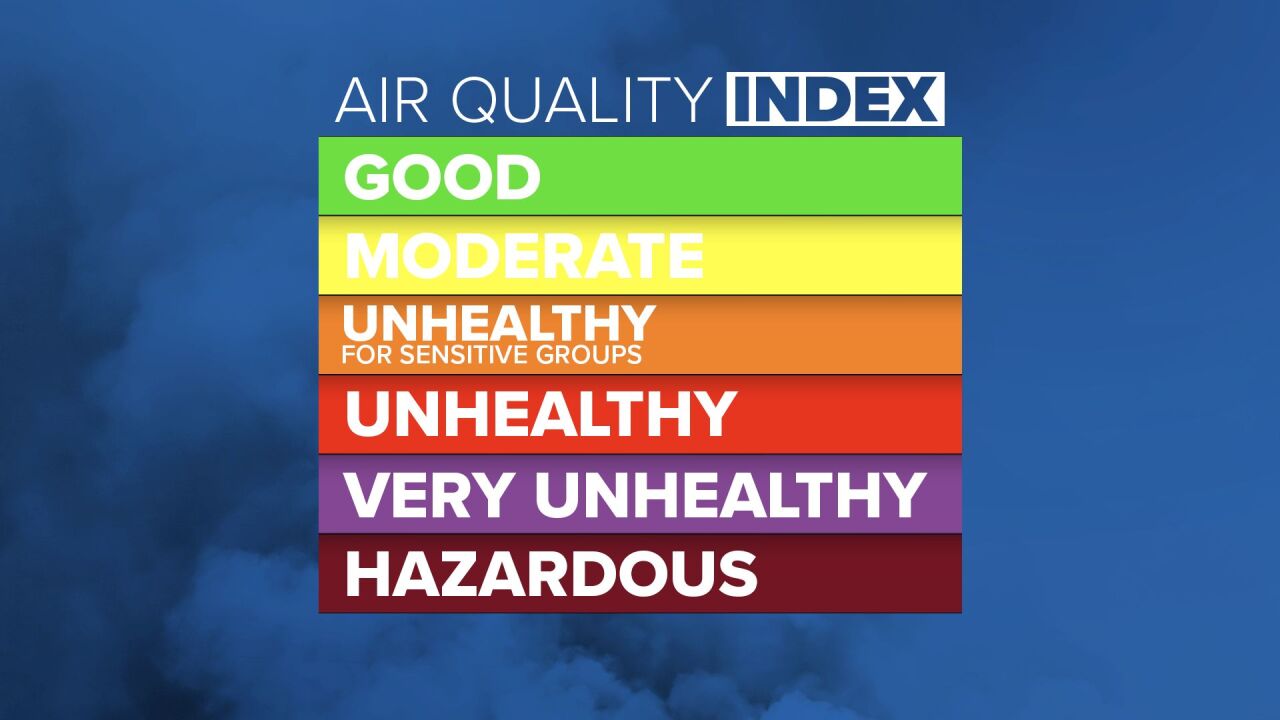HELENA — In the video above, Brianna Juneau reports on steps you can take to minimize the effects of poor air quality, such as when wildfire smoke creates hazardous conditions.
- Video: Landspout tornado in Montana
- What is an 'unattended death'?
- KRTV says farewell to Maggie Reilly
- Concert lineup: Montana State Fair
The "Today's Air" website provides the latest air quality data from across Montana, along with color-coded details about health effects of wildfire smoke.
People are encouraged to check air quality levels regularly and follow guidelines associated with the air quality levels. Where air monitors aren’t present, use visibility guidelines to estimate air quality.
Here are the six color-coded classifications of air quality:
- MAROON: Hazardous - Health warning of emergency conditions: everyone is more likely to be affected.
- PURPLE: Very Unhealthy - health alert - the risk of health effects is increased for everyone.
- RED: Unhealthy - some members of the general public may experience health effects; members of sensitive groups may experience more serious health effects.
- ORANGE: Unhealthy for Sensitive Groups - members of sensitive groups may experience health effects. The general public is less likely to be affected.
- YELLOW: Moderate - air quality is acceptable. However, there may be a risk for some people, particularly those who are unusually sensitive to air pollution.
- GREEN: Good - air quality is satisfactory, and air pollution poses little or no risk.
On days when the air quality is forecast to be unhealthy you can take steps to reduce your exposure, including:
- Choose a less intense activity.
- Shorten your outdoor activities.
- Reschedule activities.
- Exercise away from busy roads.
When particle levels are high outdoors, they can be high indoors too. So how do you keep particles lower indoors?
- Reduce your use of fireplaces and wood stoves.
- Don’t use candles or smoke indoors.
- Use HEPA air filters in your HVAC system.
- Buy or make your own portable air cleaner designed to reduce particles indoors.
- If you don't have an air conditioner, staying inside with the windows closed may be dangerous in extremely hot weather.
- If you are hot, go someplace with air conditioning or check with your local government to find out if cooling centers are available in your community.
There are several resources people can check for information on wildfire and area smoke.
- Air quality: https://deq.mt.gov/air/Programs/monitoring
- Montana fire info: https://www.mtfireinfo.org/
- U.S. large wildfires: https://inciweb.nwcg.gov/?state=27



